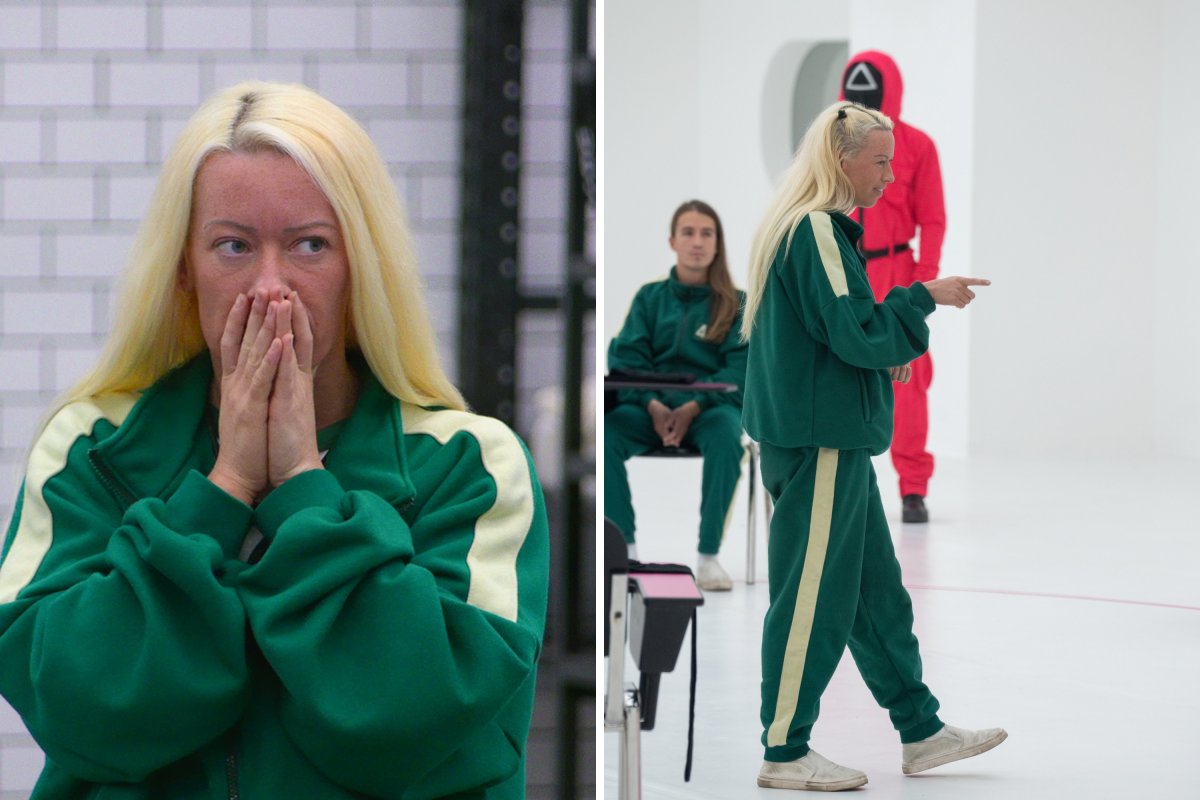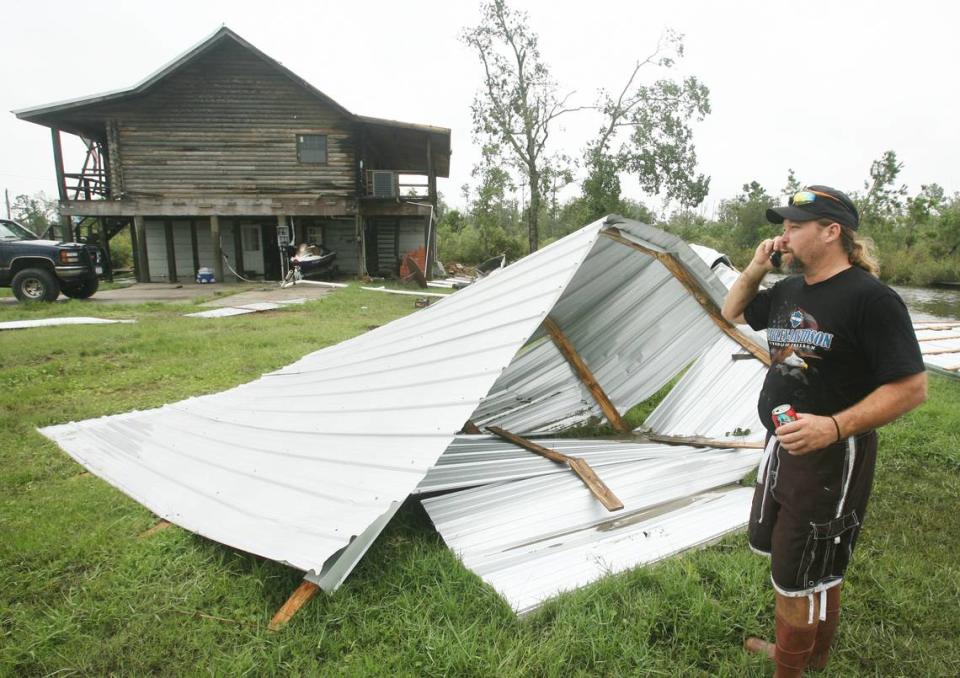When I first came across Squid Game: The Challenge, I decided to apply straight away. We were required to submit a 60-second video, and as soon as I received a callback, I knew I would be accepted.
I’ve always had so much more to offer. I’m often underestimated and stereotyped. People frequently look at me and question what I’m capable of, but there’s more to me than meets the eye. I knew that all I needed was a chance to prove that.
I was confident during the interview and was certain that I could convince the team that I had what it took to join Squid Game.
Entering Squid Game: The Challenge
The challenge started with 456 participants. Winning the cash prize was more of an afterthought until I saw the large amount of money in front of me.
I didn’t harbor any hopes of winning—I just wanted to experience what it was like to participate in the Squid Game. Having watched the show, it was a very popular series. At one point, it felt like everyone was talking about it.

Netflix/Amanda Tayor
When I was watching the series as a viewer, I struggled to connect with how the characters were feeling and thinking, as the game seemed trivial. But when you’re in it, it’s a completely different experience.
For example, the Dalgona cookie challenge was one of the hardest games I’ve ever participated in. You’re sitting there with many people around you, all doing the same thing. The ticking clock, growing louder with time, adding to the pressure.
In the beginning, I thought 10 minutes was more than enough time to cut the cookie, but people started to pass within just a minute or two. I found myself nowhere near finished and started to wonder: Why am I not getting through yet?
That thought made me panic even more.
For the viewer, it may seem easy, but the comparison aspect—of actually being in the game and constantly having to watch others—makes it so much harder.
During the Red Light Green Light challenge, I was one of the last to cross the line. I watched everyone else experience the joy of advancing, while I was battling with thoughts of failure.
There was a moment when I thought I wouldn’t even get through this because there were only five seconds left, and that was only the first challenge.
Later on in the challenge, as more people got eliminated, the thought of winning became real for me. I began thinking about the $4.56 million and what I’d do if I won it.
The first thing that came to mind was buying a large country house somewhere. A house that could stay in the family forever. But as I got to know more people and heard their stories, I realized that there was so much more I could do with the prize money.
I began to think about the people and causes I wanted to help in the community. My son has Tourette syndrome, and there’s an impactful charity that we’re a part of. I saw the potential to make a positive impact in that field.
My son is also part of a local football team, which is run by hardworking volunteers. They’ve been incredibly supportive of my son’s football journey and his personal growth. This was another area where I felt I could make a difference.
While $4.56 million isn’t going to change the world, it can make a big difference to some people.
Forming an Alliance
Later on in the challenge, I slowly began to notice that there were 22 men and only nine women.
I knew the females had to stick together because some of the males were forming strong alliances, and we were somewhat left on our own. We weren’t the loudest or the biggest characters in the room, so the men were essentially taking over in the dorm.
I could feel that and knew something needed to be done. I was under the radar, not out there getting into every group and trying to talk with everybody. I was very conscious that when you became a big character, you became a target.
I suggested that in the Alliance challenge, the females should vote for each other first, before voting for the males. I was taking a risk because I didn’t know if I would get the backing of the other females. I wasn’t sure if they would agree and then go back to the other groups and reveal that I was rallying the women together.
It was a risk, but it needed to be taken at that point. I was fortunate that it ended up working out, despite a few hiccups along the way.
I was frustrated when one of the females ended up picking a male, despite having a conversation minutes before and assuring us that we would pick each other. I thought: What are you doing?
She wasn’t just showing me that I couldn’t trust her, she was showing everyone else. I knew who to trust, and who to stay away from.
Seeing People’s True Colours
As we got closer to winning the cash prize, I began to see people’s true colors and intentions in the game.
During the Glass Bridge challenge, one of the females, Mai, volunteered to jump first behind the scenes, which was a big, thoughtful gesture. I was cheering her on, but just before the challenge was about to begin, she changed her mind.
I thought to myself: Hold on, you’re trying to project this image of being a team player, but you didn’t follow through.
I couldn’t voice my thoughts loudly at this stage because Mai had too many allies. She also chose to target another female in the dice challenge, going against the decision we all agreed upon. This was frustrating for me.
At one point, I could no longer hide my annoyance. I thought: That’s it. I decided to take a step back, and everyone knew it. I wasn’t the only person feeling this way, so there was tension among the players.
I was eliminated in the semi-finals during the Circle of Trust challenge. It was a fellow female who took me out, and I was the second to be eliminated in that challenge.
As soon as I walked into that room, I knew it couldn’t have been a worse challenge at that stage. I thought, Oh, this is how it’s going to happen, I’m going home.
There were very few friends sitting around that room at that stage, so I knew that they’d probably want to eliminate me.
Before walking into that challenge, I thought that I could have been a millionaire, but it was ripped away without me doing anything.
Behind The Scenes
The conditions in the challenge worked out okay for me. We only got three square meals a day. The porridge was flavorless—there was nothing to it, no salt or pepper, and it was basic. In terms of the portion size, I didn’t struggle.
However, I was watching some of the men who were much bigger than me. They were exercising and running around, burning up all this energy, and I thought, You’re not replenishing anything. Why are you doing that? You should save your energy.
I kept myself hydrated. I didn’t go doing laps of the dorm or doing star jumps every morning like some others. I’ve heard people saying how cold they were, but I was warm. I even took off my jacket at times.
I enjoyed the experience. I was quite cozy, to be honest. I had the top bunk, so it was good.
You don’t see the producers behind the scenes. They only take you to where you need to go, which made the experience feel very real.
Once you’re in the game, you’re in the game. The only time you have contact with any of the creatives, shall we say, is when they were moving us between sets. But even then, we were always on the move, so there wasn’t time to build any relationships.
The experience was very much authentic, and the thing I took away from it was how I was towards other people. I get on with everyone and I love being around people, but as an only child, I’ve grown up content with my own space and independence.
As a single parent, I’m a “get up and go” type of person and try not to rely on anyone—I tend to do things independently.
Being in the challenge made me realize the importance of connections with other players, something I hadn’t anticipated initially. I thought I needed to be on my own and couldn’t afford to make friends because, in the end, it would come down to just me.
But once you’re in there, that mindset goes out the window.
I became much more open to people, letting them in and getting to know them. It was quite empowering. Many people have pointed out in the past that I need to let people in, and I have to admit that the challenge helped me realize that they are right.
People make the world better, and the challenge had an impact on me. I’ve met people who I believe will be friends for life.
This experience was something I will always cherish and remember.
Amanda Tayor is player 019 on “Squid Game: The Challenge”, reaching the semi-finals. She is also an international tae kwon do champion, and a HR manager.
All views expressed in this article are the author’s own.
As told to Newsweek’s Associate Editor, Carine Harb.
Do you have a unique experience or personal story to share? Email the My Turn team at myturn@newsweek.com
Uncommon Knowledge
Newsweek is committed to challenging conventional wisdom and finding connections in the search for common ground.
Newsweek is committed to challenging conventional wisdom and finding connections in the search for common ground.
Signup bonus from





